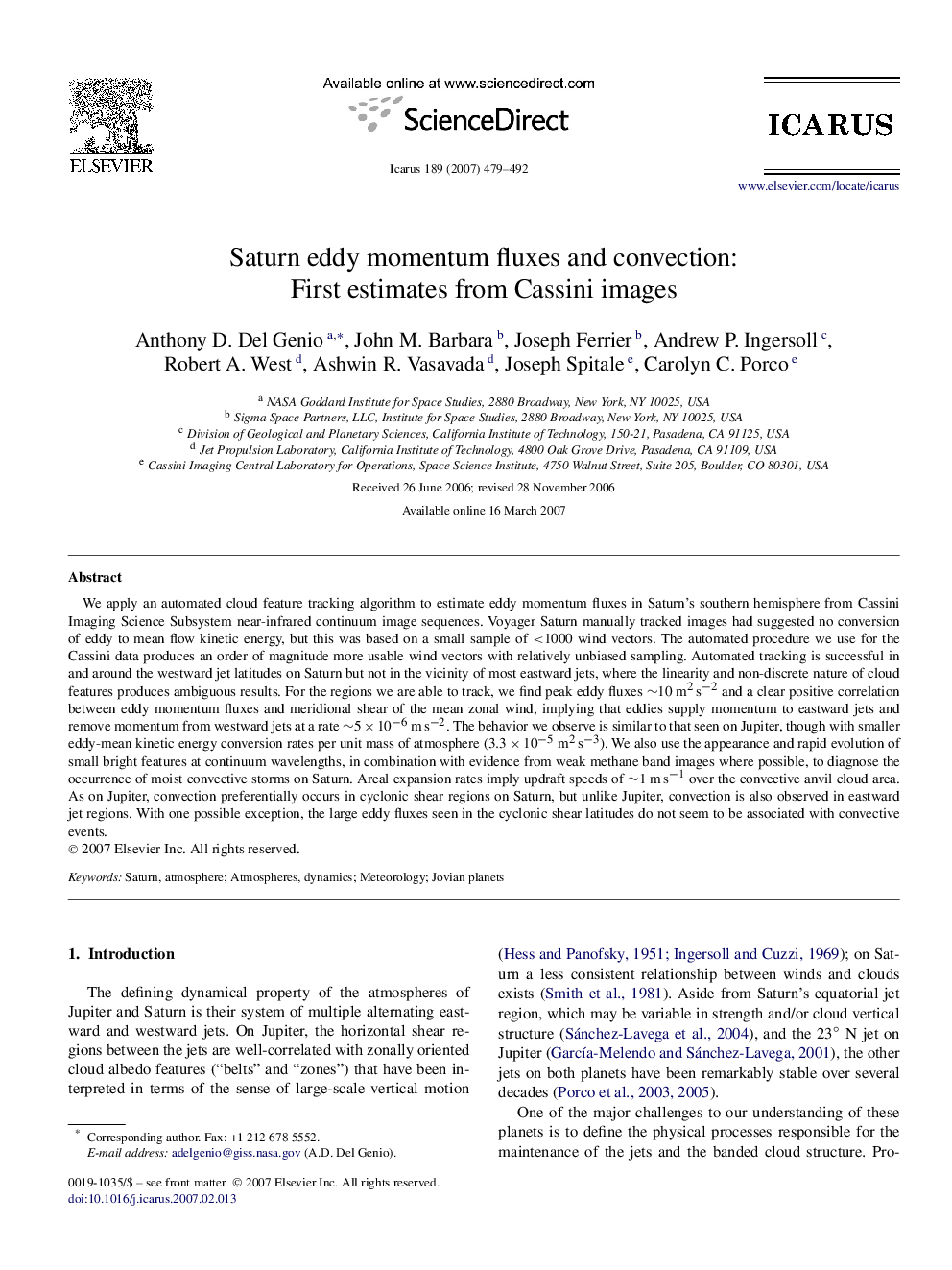| Article ID | Journal | Published Year | Pages | File Type |
|---|---|---|---|---|
| 1775661 | Icarus | 2007 | 14 Pages |
Abstract
We apply an automated cloud feature tracking algorithm to estimate eddy momentum fluxes in Saturn's southern hemisphere from Cassini Imaging Science Subsystem near-infrared continuum image sequences. Voyager Saturn manually tracked images had suggested no conversion of eddy to mean flow kinetic energy, but this was based on a small sample of <1000 wind vectors. The automated procedure we use for the Cassini data produces an order of magnitude more usable wind vectors with relatively unbiased sampling. Automated tracking is successful in and around the westward jet latitudes on Saturn but not in the vicinity of most eastward jets, where the linearity and non-discrete nature of cloud features produces ambiguous results. For the regions we are able to track, we find peak eddy fluxes â¼10m2sâ2 and a clear positive correlation between eddy momentum fluxes and meridional shear of the mean zonal wind, implying that eddies supply momentum to eastward jets and remove momentum from westward jets at a rate â¼5Ã10â6msâ2. The behavior we observe is similar to that seen on Jupiter, though with smaller eddy-mean kinetic energy conversion rates per unit mass of atmosphere (3.3Ã10â5m2sâ3). We also use the appearance and rapid evolution of small bright features at continuum wavelengths, in combination with evidence from weak methane band images where possible, to diagnose the occurrence of moist convective storms on Saturn. Areal expansion rates imply updraft speeds of â¼1msâ1 over the convective anvil cloud area. As on Jupiter, convection preferentially occurs in cyclonic shear regions on Saturn, but unlike Jupiter, convection is also observed in eastward jet regions. With one possible exception, the large eddy fluxes seen in the cyclonic shear latitudes do not seem to be associated with convective events.
Related Topics
Physical Sciences and Engineering
Earth and Planetary Sciences
Space and Planetary Science
Authors
Anthony D. Del Genio, John M. Barbara, Joseph Ferrier, Andrew P. Ingersoll, Robert A. West, Ashwin R. Vasavada, Joseph Spitale, Carolyn C. Porco,
